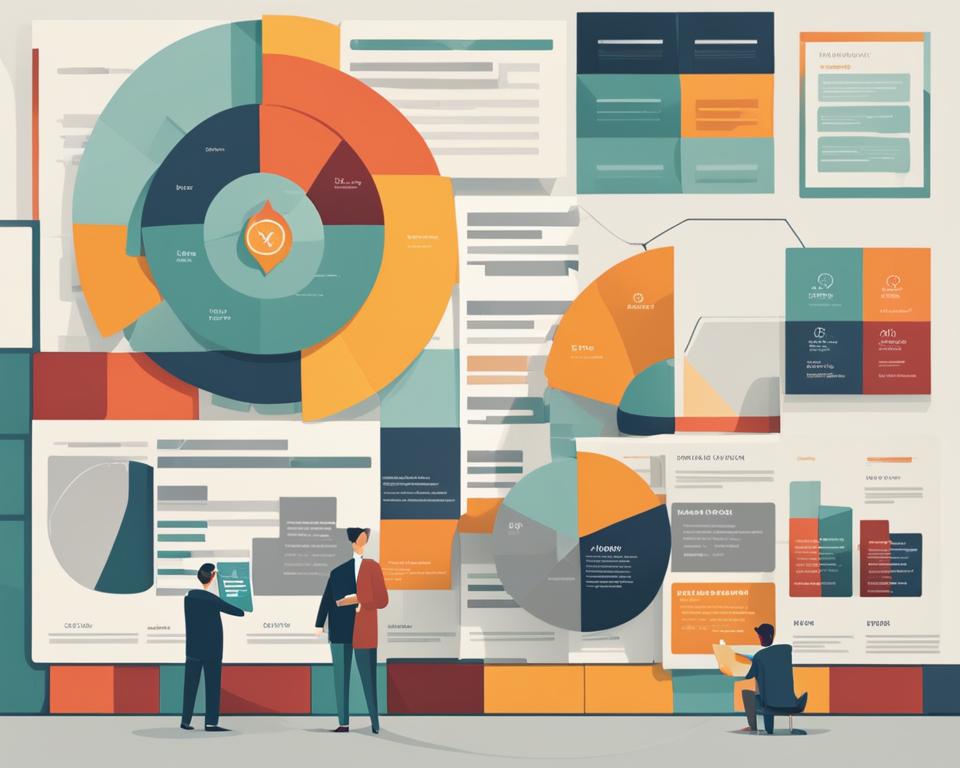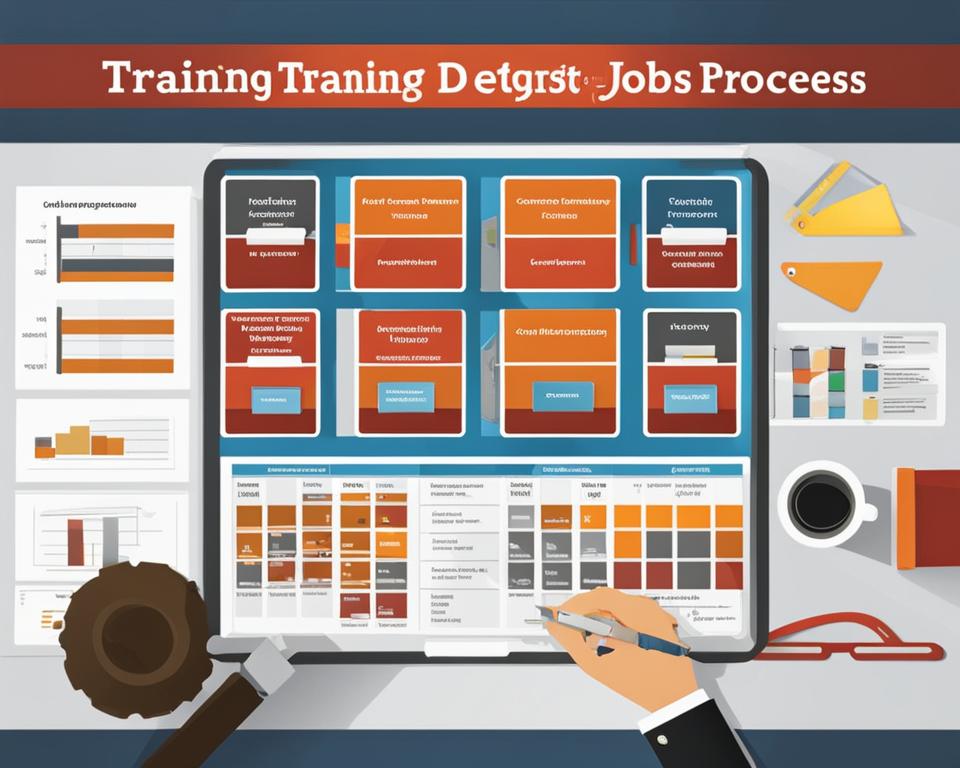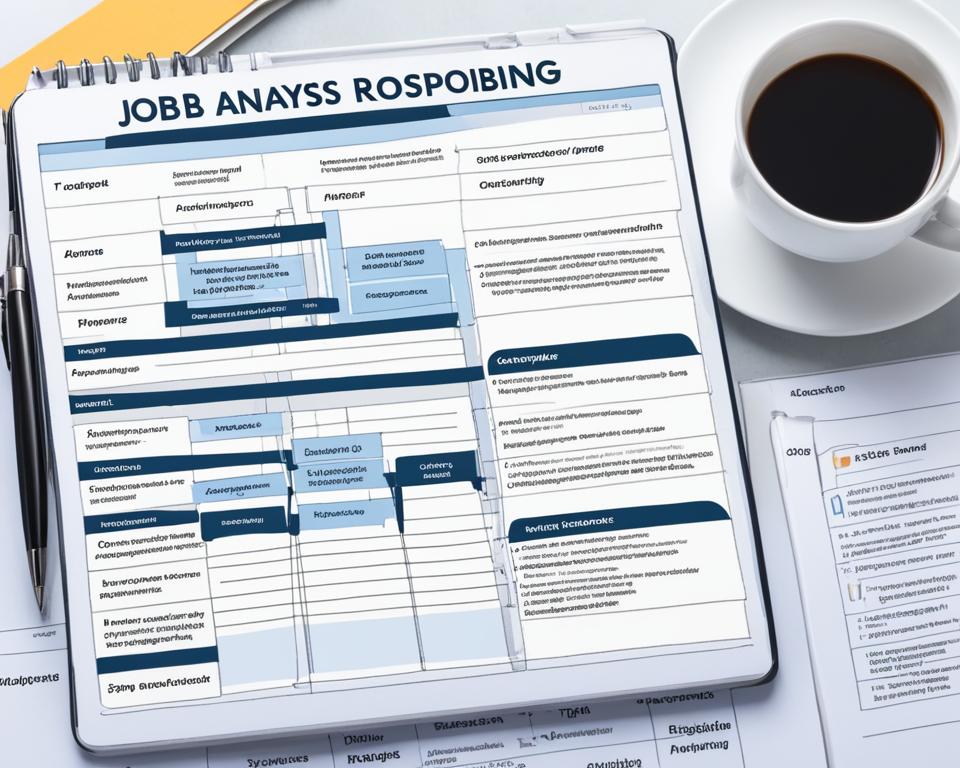Job analysis is an essential tool for any organization seeking to enhance its workforce and improve performance. It involves a systematic approach to identifying the skills, knowledge, and abilities necessary for a specific role, enabling organizations to make informed decisions about job design, training, and performance evaluations. In this section, we will examine the various uses of job analysis and how it can benefit organizations in achieving their goals.
Key Takeaways
- Job analysis helps organizations develop accurate job descriptions and job specifications for hiring processes.
- By understanding the job tasks and requirements, organizations can design effective training programs.
- Job analysis provides a foundation for fair and comprehensive performance evaluations.
- Organizational effectiveness and succession planning benefit from job analysis.
- Job analysis enables organizations to comply effectively with legal requirements.
Enhance Hiring Process
Employers face the critical task of attracting and identifying the right candidates for specific roles. Job analysis plays a crucial role in the hiring process as it provides a foundation for developing accurate job descriptions and job specifications. By conducting a thorough job analysis, organizations can identify the critical competencies, abilities, and knowledge needed for a role.
This information helps attract the right candidates and screen out unqualified applicants. Companies can streamline their hiring process and save valuable time and resources with accurate job descriptions. Furthermore, this process helps ensure equal employment opportunity and fair hiring practices.
Organizations can use the job analysis results to create targeted job postings and job advertisements. This focused messaging attracts candidates who possess the required competencies for the position. Accurate job descriptions and specifications also serve as helpful templates and references during the interview process to ensure interviewers ask relevant questions, and make objective and informed hiring decisions.

Facilitate Training and Development
Job analysis is a crucial tool for designing effective training programs that enable employees to develop the necessary job competencies. By breaking down various job tasks, identifying critical knowledge, skills, and abilities, and analyzing the work environment of each role, organizations can design training programs that align with the specific needs of each job.
Moreover, job analysis helps organizations establish performance standards, assess employee performance, and identify skill gaps. This helps in designing programs that allow employees to excel in their role.
Overall, job analysis is critical for facilitating training and development, as it enables organizations to design precise and effective programs that focus on specific competencies needed to perform a job successfully.

Improve Performance Evaluations
Job analysis is a critical tool for improving performance evaluations. By conducting a job analysis, organizations can define the knowledge, skills, and abilities required for each job and establish clear performance standards. This ensures objective evaluations that provide valuable feedback for development and recognition of achievements.

- Job analysis enables organizations to develop effective performance evaluation methods that align with job requirements.
- Clear job expectations and performance standards reduce bias and subjectivity in evaluations by focusing on job-related factors.
- The objective evaluations resulting from job analysis can be used to identify performance gaps and areas for improvement.
Overall, job analysis for performance evaluations benefits organizations by ensuring fairness, accuracy, and effectiveness in evaluating employee performance.
Align Job Responsibilities and Workforce Planning
Job analysis is an essential tool that helps organizations in aligning job responsibilities with strategic workforce planning. By conducting a comprehensive job analysis, companies can identify the knowledge, skills, and abilities required for each job role, and align the responsibilities with workforce planning goals.
In simple terms, job analysis helps organizations bridge the gap between business requirements and job design. For example, if the organization needs to expand its operations and hire new team members, job analysis can help identify the essential job duties and competencies for the new positions. This information can assist HR managers in developing accurate job descriptions, which then enables them to attract the right candidates and assess their skills objectively.
Furthermore, job analysis helps organizations in designing efficient workflows and work structures. By understanding the specific tasks, duties, and responsibilities associated with each job role, companies can allocate work optimally, enabling employees to perform their job duties to the best of their abilities while achieving the organization’s objectives.
Therefore, job analysis is an indispensable tool for workforce planning, job design, and work allocation. Organizations that use job analysis to align job responsibilities with workforce planning goals are more likely to achieve organizational effectiveness and success.

Enhance Job Satisfaction and Engagement
One of the significant benefits of job analysis is identifying the factors that contribute to an employee’s job satisfaction and engagement. Job satisfaction refers to an employee’s overall sense of well-being and fulfillment from a job, while engagement refers to an employee’s level of commitment and involvement in their work.
By conducting job analysis, organizations can collect data on the essential job tasks, duties, and responsibilities, as well as the knowledge, skills, and abilities required to perform the job. This information helps organizations ensure that employees are well suited for their roles, leading to increased employee satisfaction and engagement in their work.
Moreover, job analysis can help organizations create an environment that fosters employee satisfaction, productivity, and engagement. It enables organizations to understand the impact of organizational policies, compensation, incentives, work-life balance, and other vital elements on job satisfaction and engagement levels.
Ultimately, the use of job analysis for job satisfaction and engagement can lead to a more motivated, productive, and loyal workforce, benefiting both the organization and its employees.

Support Compliance and Legal Requirements
Organizations face legal requirements that could impact their staffing policies and hiring decisions. Job analysis is a vital tool to ensure compliance with Equal Employment Opportunity (EEO) laws and other labor laws. By conducting a job analysis, organizations can identify the essential requirements of each job position, allocate responsibilities effectively, and avoid discriminatory practices.
Job analysis ensures that selection procedures used for promoting or hiring employees are fair and focus on relevant job requirements. Accommodations for disabled employees and creating a safe and bias-free work environment are also essential. Organizations can identify potential sources of discrimination through job analysis and take corrective measures.
Additionally, job analysis can ensure fair compensation practices by defining job duties and requirements accurately. This helps organizations avoid lawsuits or other labor-related legal issues. Compliance with legal requirements through job analysis helps organizations create a more diverse and inclusive workplace, which can enhance their reputation and attract top talent.

Drive Organizational Effectiveness and Succession Planning
Succession planning and organizational effectiveness are critical components of any organization’s long-term strategy. Job analysis plays a critical role in both these areas. By conducting a job analysis, organizations can identify the essential competencies, knowledge, and skills required for each position. This information enables organizations to create job-specific development plans, target training programs, and identify high-potential employees.
Succession planning involves developing a pipeline of future leaders to ensure the organization’s smooth functioning in the long run. Job analysis helps organizations identify the competencies required for leadership positions and create a talent development plan to groom future leaders. This information enables organizations to identify high-potential employees, match their skills with future leadership roles, and ensure that the organization remains successful over the long term.
Organizational effectiveness is a measure of an organization’s ability to achieve its objectives efficiently. A job analysis can help in identifying the critical tasks, knowledge, skills, and abilities required to achieve business objectives. This information ensures that the organization’s resources are allocated effectively, resulting in increased productivity, higher employee satisfaction, and better organizational performance.
In conclusion, job analysis is a powerful tool that can help organizations enhance their hiring process, facilitate training and development, improve performance evaluations, align job responsibilities and workforce planning, enhance job satisfaction and engagement, support compliance and legal requirements, and drive organizational effectiveness and succession planning. By incorporating job analysis into their strategy, organizations can develop a competitive advantage, ensuring long-term success.




